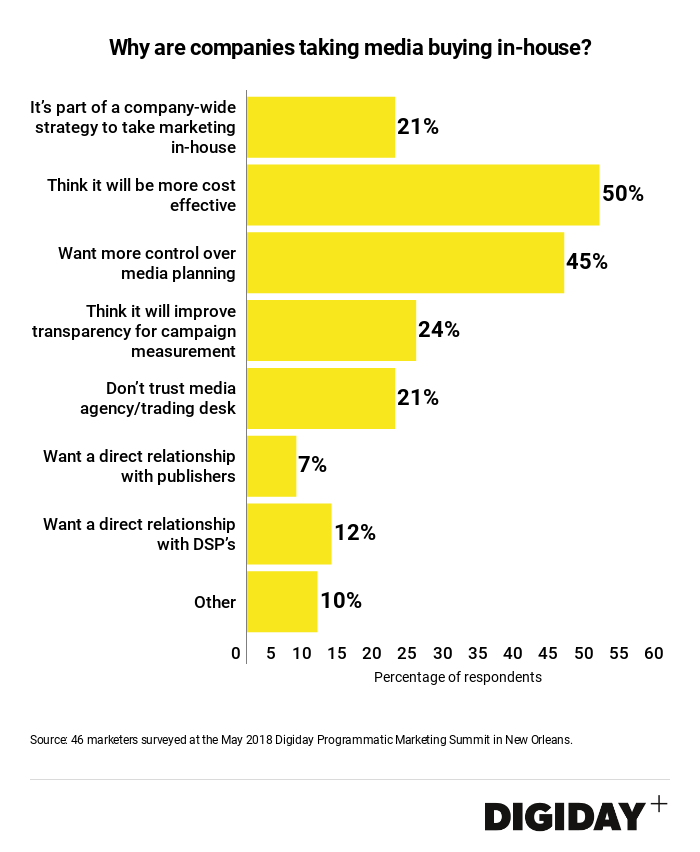Save 50% on a 3-month Digiday+ membership. Ends Dec 5.

A growing number of companies are now taking some media buying functions in-house amid a prevailing sense of distrust and a lack of transparency in digital ad buying. According to marketers surveyed by Digiday, however, the primary motivation for going in-house isn’t increased transparency or trust, but the prospect of greater cost efficiencies. Only 21 percent of marketers said they were taking media buying in-house because they lacked trust in their media agencies or trading desks.
Agencies often try to prevent clients from taking media buying in-house by arguing they can purchase ad inventory at lower rates because they aggregate spending from multiple clients. Despite that, companies are finding the money saved from improved efficiencies with in-house buying to be substantial. Just by conducting a quarter of its ad buying internally, Pernod Ricard said it saved $71.5 million in the first half of 2017.
In-house media buying also means marketers can often deal with and pay fewer middlemen. A study by WARC found that only 40 percents of marketers media budgets reach publishers. By reducing the work done with agencies and their partners, brands limit their exposure to hidden rebate costs and other markups.

Another motivating factor for brands to take ad buying in-house is greater ownership over planning. Forty-five percent of the marketers surveyed claim it a key consideration. Part of the issue companies face when they hand off responsibility is that communication breaks down, meaning campaigns can be run without the client’s permission. Taking control over media buying can also lead to faster campaign execution. The New York Times was able to ideate, plan and launch campaigns in weeks thanks to its 20-person in-house media team, for example, whereas its competitors were forced to plan a year in advance with their agencies.
More in Media

AI-powered professional learning and the battle vs. ‘workslop’: Inside Deloitte’s Scout
Deloitte last month launched Scout as part of its Project 120, the company’s $1.4 billion investment in professional development.

‘The Big Bang has happened’: Reach gets proactive on AI-era referrals, starting with subscriptions
This week, the publisher of national U.K. titles Daily Mirror, Daily Express and Daily Star, is rolling out its first paid digital subscriptions – a big departure from the free, ad-funded model it’s had throughout its 120-year history.

Arena Group, BuzzFeed, USA Today Co, Vox Media join RSL’s AI content licensing efforts
Arena Group, BuzzFeed, USA Today Co and Vox Media are participating in the RSL Collective’s efforts to license content to AI companies.





